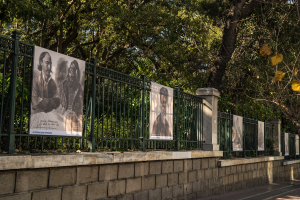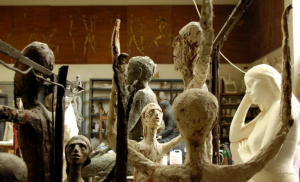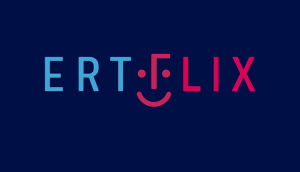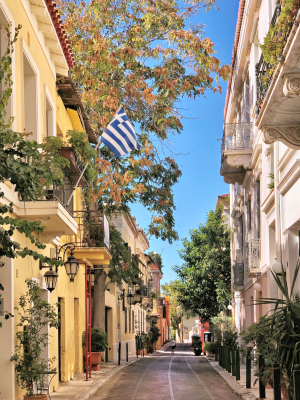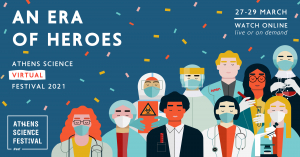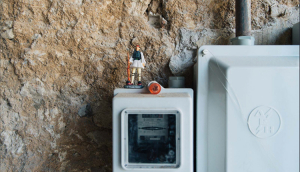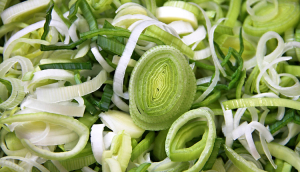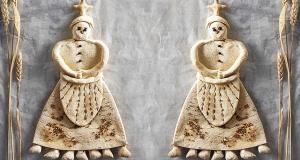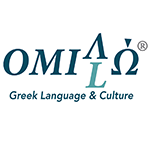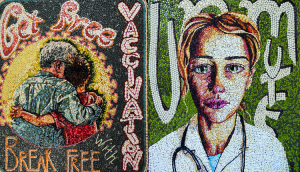Ingredients
ABOUT US
XpatAthens
Wednesday, 10 March 2021 15:01
Celebrating The Greek Revolution Anniversary - National Garden Exhibition
Outdoor exhibition in the National Garden for the 200 years since the 1821 Greek Revolution
The Sylvia Ioannou Foundation, the National Historical Museum, and the Municipality of Athens are organizing a special exhibition in memory and honor to the heroes of 1821, as part of the celebration for the 200th anniversary of the Greek Revolution.
Two centuries after the national polygenesis, the National Garden, an emblematic landmark of Athens, hosts an outdoor exhibition, on Vasilissis Sofias Avenue, which brings to the fore the people who fought and sacrificed so that Greek people today can enjoy freedom and democracy.
The exhibition presents 22 paintings with some of 320 unique faces painted by Benjamin Mary (1792-1846), Belgian diplomatic representative of Greece.
The drawings were made naturally, mainly in Athens, between 1839 and 1844. They are published for the first time, giving us the opportunity to meet known and unknown figures of the Greek Revolution and Ottoman Greece, through the sensitive and penetrating gaze of a European artist.
Fighters, politicians, priests, scholars, philhellenes, everyday people, pose patiently for the portrait and Benjamin Mary manages to capture their expression in a unique moment in history.
Whether you’ve just arrived in town – or have been here for years – Athens always has new secrets to share!
This is Athens is the official guide to this captivating city of ancient energies and booming urban culture. Compiled by a team of specialist local writers, This is Athens brings you an authentic and intimate portrait of a living Athens beyond the guidebooks – along with daily curated listings of all the best events and great weekend inspiration all-year round. From must-know neighbourhoods and emerging art hubs, to gourmet hotspots, cool shopping and the buzziest bars, This is Athens will help you to get the most out of living in Athens!
Thank you This is Athens for your contribution as an XpatAthens Partner.
Two centuries after the national polygenesis, the National Garden, an emblematic landmark of Athens, hosts an outdoor exhibition, on Vasilissis Sofias Avenue, which brings to the fore the people who fought and sacrificed so that Greek people today can enjoy freedom and democracy.
The exhibition presents 22 paintings with some of 320 unique faces painted by Benjamin Mary (1792-1846), Belgian diplomatic representative of Greece.
The drawings were made naturally, mainly in Athens, between 1839 and 1844. They are published for the first time, giving us the opportunity to meet known and unknown figures of the Greek Revolution and Ottoman Greece, through the sensitive and penetrating gaze of a European artist.
Fighters, politicians, priests, scholars, philhellenes, everyday people, pose patiently for the portrait and Benjamin Mary manages to capture their expression in a unique moment in history.
Whether you’ve just arrived in town – or have been here for years – Athens always has new secrets to share!
This is Athens is the official guide to this captivating city of ancient energies and booming urban culture. Compiled by a team of specialist local writers, This is Athens brings you an authentic and intimate portrait of a living Athens beyond the guidebooks – along with daily curated listings of all the best events and great weekend inspiration all-year round. From must-know neighbourhoods and emerging art hubs, to gourmet hotspots, cool shopping and the buzziest bars, This is Athens will help you to get the most out of living in Athens!
Thank you This is Athens for your contribution as an XpatAthens Partner.
Published in
Art
Tagged under
Wednesday, 10 March 2021 14:34
5 Great Virtual Art Exhibitions To Visit In Athens This March
One year on, the resourceful and resilient galleries of Athens continue to find engaging ways to captivate our senses and channel the city’s bold artistic impulses, while their doors remain largely shuttered. This is Athens' resident art expert, Kiriakos Spirou, lists five fascinating digital exhibitions to quench your culture cravings in this month of March.
Gardening at Zoumboulakis Galleries
With spring’s arrival, the Zoumboulakis Galleries has created Athens’ first indoor botanical garden exhibition. In the vast basement space of its Kolonaki Square site (there’s a second Zoumboulakis space on Kriezotou dedicated to design), you can take a virtual stroll through green-thumbed works by twenty artists, both from Greece and abroad. The exhibition Gardening is a thought-provoking take on our pandemic-struck world, as well as a witty “return to nature” through a mix of painting, sculpture, installations and video. Thanks to the fresh eye of curator Georgia Liapi, who recently joined the gallery, the exhibition combines works by young and emerging artists, such as Yorgos Maraziotis and Melina Mosland, with more established gallery stalwarts like Stefanos Rokos and Nikos Tranos.
With spring’s arrival, the Zoumboulakis Galleries has created Athens’ first indoor botanical garden exhibition. In the vast basement space of its Kolonaki Square site (there’s a second Zoumboulakis space on Kriezotou dedicated to design), you can take a virtual stroll through green-thumbed works by twenty artists, both from Greece and abroad. The exhibition Gardening is a thought-provoking take on our pandemic-struck world, as well as a witty “return to nature” through a mix of painting, sculpture, installations and video. Thanks to the fresh eye of curator Georgia Liapi, who recently joined the gallery, the exhibition combines works by young and emerging artists, such as Yorgos Maraziotis and Melina Mosland, with more established gallery stalwarts like Stefanos Rokos and Nikos Tranos.
The Studio of Yiannis Pappas by the Benaki Museum
The late great sculptor Yiannis Pappas was a pivotal figure of Greek post-war art, not least because of his many commissions for public sculptures in cities and institutions all around Greece (if you pass Zappeio park, make sure to clock his statue of Alexander the Great on the corner of Amalias Avenue). Pappas’ former Athens home and studio in Zografou is an extraordinary place, filled with his bronze and marble sculptures, studies and drawings. In fact, this is the largest trove of the artist’s work, which he donated to the Benaki Museum in 2002, three years before his death. This well-produced virtual exhibition leads you step by step through the studio, with sound-guide snippets in several languages attached to important exhibits.
The late great sculptor Yiannis Pappas was a pivotal figure of Greek post-war art, not least because of his many commissions for public sculptures in cities and institutions all around Greece (if you pass Zappeio park, make sure to clock his statue of Alexander the Great on the corner of Amalias Avenue). Pappas’ former Athens home and studio in Zografou is an extraordinary place, filled with his bronze and marble sculptures, studies and drawings. In fact, this is the largest trove of the artist’s work, which he donated to the Benaki Museum in 2002, three years before his death. This well-produced virtual exhibition leads you step by step through the studio, with sound-guide snippets in several languages attached to important exhibits.
Posterity at The Blender Gallery
A small cultural hub for the southern suburbs of Athens, The Blender Gallery in glitzy Glyfada stages several exhibitions and live events throughout the year. Its current show (curated by Nestoras Katsimichas) features an impressive haul of 100 rare posters collected by Bosnian Serb engraver Milan Zunic. Originating from the 1960s onwards, the posters were produced in Eastern European countries (including former Eastern Germany), and are great examples of how graphic design and communication can leave room for authentic artistic expression.
A small cultural hub for the southern suburbs of Athens, The Blender Gallery in glitzy Glyfada stages several exhibitions and live events throughout the year. Its current show (curated by Nestoras Katsimichas) features an impressive haul of 100 rare posters collected by Bosnian Serb engraver Milan Zunic. Originating from the 1960s onwards, the posters were produced in Eastern European countries (including former Eastern Germany), and are great examples of how graphic design and communication can leave room for authentic artistic expression.
Stella Kapezanou at Evripides Gallery
One of the most imaginative young Greek contemporary painters around, Stella Kapezanou is in constant dialogue with pop aesthetics and art-history motifs, using a very personal, colour-drenched visual language. Highly-stylised people inhabit surrealistically patterned backgrounds, and albeit they appear immersed in glamour and luxury, their decadence is undermined by subtle humour and irony. Kapezanou is staging her second solo show at Kolonaki's Evripides Gallery, which is also presented in satisfying detail in the gallery's virtual viewing room.
One of the most imaginative young Greek contemporary painters around, Stella Kapezanou is in constant dialogue with pop aesthetics and art-history motifs, using a very personal, colour-drenched visual language. Highly-stylised people inhabit surrealistically patterned backgrounds, and albeit they appear immersed in glamour and luxury, their decadence is undermined by subtle humour and irony. Kapezanou is staging her second solo show at Kolonaki's Evripides Gallery, which is also presented in satisfying detail in the gallery's virtual viewing room.
Privacy, childhood, the family, safety and our need to belong are some of the primal themes explored in this digital display that features exhibits from Athens’ newest culture hub, the National Museum of Contemporary Art (EMST). Feels like home examines how artists have been engaging with these universal concepts of home in their work, with items by established Greek and foreign artists (there’s even a Magritte sculpture included). The exhibition is one of three chapters of the digital project Visualising Humanity, organised by the Network of Contemporary Culture Museums of the Ministry of Culture.
Whether you’ve just arrived in town – or have been here for years – Athens always has new secrets to share!
This is Athens is the official guide to this captivating city of ancient energies and booming urban culture. Compiled by a team of specialist local writers, This is Athens brings you an authentic and intimate portrait of a living Athens beyond the guidebooks – along with daily curated listings of all the best events and great weekend inspiration all-year round. From must-know neighbourhoods and emerging art hubs, to gourmet hotspots, cool shopping and the buzziest bars, This is Athens will help you to get the most out of living in Athens!
Thank you This is Athens for your contribution as an XpatAthens Partner.
Whether you’ve just arrived in town – or have been here for years – Athens always has new secrets to share!
This is Athens is the official guide to this captivating city of ancient energies and booming urban culture. Compiled by a team of specialist local writers, This is Athens brings you an authentic and intimate portrait of a living Athens beyond the guidebooks – along with daily curated listings of all the best events and great weekend inspiration all-year round. From must-know neighbourhoods and emerging art hubs, to gourmet hotspots, cool shopping and the buzziest bars, This is Athens will help you to get the most out of living in Athens!
Thank you This is Athens for your contribution as an XpatAthens Partner.
Published in
Art
Tagged under
Friday, 17 March 2023 16:06
8 Ways To Feel Like A Local In Athens
The monumental side of Athens comes at you like fireworks frozen in time, but if showstoppers like the Acropolis dazzle the first-time visitor, they also form part of the daily tapestry of life for regular Athenians. Tuning into the local rhythms is not necessarily an exercise in what's 'Instagrammable'. Rather, as a resident observer of this pulsing city, I’ve found that some of the best things about Athens are those little backstage sights and sounds that add up to an urban experience that can border on the theatrical. A tangible modern energy mixes with ancient allure, and despite some disruptions caused by the recent lockdowns, life goes on in a modified Athenian style. Here’s how to claim some of that celebrated Athens groove for yourself and feel more like a local (though you might have to be patient for just a little while longer to experience a couple of these suggestions):
Stroll Through Mets To Pangrati
Mets is one of the quietest central Athens neighbourhoods—and not just because it's home to the historic First Cemetery of Athens (where you’ll find the elaborate tomb of Heinrich Schliemann, the archaeologist who excavated ancient Troy). The streets here are an alluring jumble of townhouses in pastel shades with abundant pink bougainvillea flowers fluttering about. Some of the side roads, like Nikiforou Theotoki and Klitomachou, seem to leap right off of a 'Welcome to Athens" movie screen. Wander over to Varnava Square, where Mets flows into the bohemian heart of Pangrati. The little oval-shaped square is lined with traditional restaurants and hipster cafes--grab a takeaway coffee from Oliver Nuts & Flavours (20 Empedokelous) and take in the scene, even if it's somewhat more subdued right now.
Go To The Same Bakery Three Days In A Row
At the time of the first lockdown in spring 2020, I was heartened to see bakeries listed as essential businesses. The fournos, or bakery, is indeed an indispensable ingredient of Athenian life. Nearly every fournos sells the same staples but many have specialty items too, and some are quite posh—especially in upscale neighbourhoods like Kolonaki. Find one that you like and go there a few mornings in a row. After around the third day, they will likely start to recognise you and maybe even offer you a sample of that morning's fresh baked specialty. My current faves are Queen Bee at 45 Patriarchou Ioakim in Kolonaki (for the almond croissants), Afrato at 13 Evridamantos in Neos Kosmos (best cinnamon buns in town) and, slightly further afield in Ano Glyfada, Special Cakes (168 Dim. Gounari) for a whimsical atmosphere and heavenly layer cakes.
Take A Walk On The Fancy Side
New York has Park Avenue. Athens has Irodou Attikou Street - which is much shorter, but packs in more pomp and circumstance as the home of both the Presidential Palace and Maximou Mansion, official seat of the Greek Prime Minister. Tucked between Vassilis Sofias Avenue (on the north) and Vasileos Konstantinou and the Panathenaic Stadium on the south, the street straddles the National Garden and at all hours of the day or night, you'll clock Evzones dutifully standing guard at their posts along the street.
Go Higher Than The Acropolis
On most fair weathered weekends, many Athenians make a dash for Mount Ymittos. At 1,026 metres, this popular green escape is about seven times taller than the Acropolis. The ridge, which they call Trellos (the "crazy mountain"), forms the long eastern spine of the Attica basin and actually supplied fountains with drinking water in ancient Athens. Today there are hiking trails galore, but it's even worth commandeering a taxi if you have to, for your dose of sylvan splendour and the mesmerizing views of city and sea.
Swap Plaka For Mitropoleos Street
Most visitors make a beeline for the sinuous lanes of charming Plaka and rightly so. But as you’d expect, it's not where Athenians go to shop. For a more native retail experience, head one block south of bustling Ermou Street - the pedestrianized retail artery of global and Greek brands stretching from Syntagma Square - to the quieter and prettier Mitropoleos Street. This slender street is home to the impressive Metropolitan Church of Athens with its pretty plaza and is also packed with interesting one-off shops. There’s Dangerous Minds, where you can pick up cool street-rooted labels , Greek gourmet hotspot, the Ergon House food hotel; plus the "secret" back entrance to Hondos Center, the Greek emporium where locals go to stock up on their beauty and grooming staples (the main entrance is on Ermou).
Get A Greek Haircut
Speaking of… Athenians are obsessed with good grooming and it sometimes seems like there are more barbershops and hair salons in Athens than there are Athenians. Getting your locks styled or bangs trimmed is arguably as much a social exercise as an aesthetic one in the Greek capital. Of course, these days, you need to make an appointment in advance, but go on and give it a try. I can't speak for the ladies, but for a great gent's cut I'm partial to Music Barber Shop in Pangrati (21 Eratosthenous).
Potter About The Pnyx
The Pnyx hill is the storied place where ancient Athenians gathered for their ekklesia, the early democratic assemblies, and the ruins of the big carved steps and stone speakers' platform are still there. With the Parthenon in the background, this forested spot is truly beautiful – especially at sunset - but still tends to be better known among locals than visitors who generally flock to Philopappou instead.
Go to Piraeus—But Skip The Ferry
You may know Piraeus as the hectic port of Athens and the place where you go for that mad dash to the ferry, but did you know you can also get some of that Aegean island flavour without so much as stepping foot on a boat? Sunny weekend days and summer evenings after work see Athenians sidling up to breezy cafes and tavernas to enjoy fresh seafood by the water's edge in the atmospheric Piraeus 'hood of Mikrolimano. This poetic round harbour is just a short taxi ride from the center of Athens. Behind it, Kastella hill affords stunning views of the Saronic Gulf from the top. Or venture to elegant Zea Marina. There, on the south side of this horseshoe-shaped harbour, the yachts come in all shapes, sizes and colours: Greek sea daydreaming guaranteed.
This content was originally published on This is Athens
Written by: Anthony Grant
Photo Credit: Thomas Gravanis
Whether you’ve just arrived in town – or have been here for years – Athens always has new secrets to share! This is Athens is the official guide to this captivating city of ancient energies and booming urban culture. Compiled by a team of specialist local writers, This is Athens brings you an authentic and intimate portrait of a living Athens beyond the guidebooks – along with daily curated listings of all the best events and great weekend inspiration all-year round. From must-know neighbourhoods and emerging art hubs, to gourmet hotspots, cool shopping and the buzziest bars, This is Athens will help you to get the most out of living in Athens!
Thank you This is Athens for your contribution as an XpatAthens Partner.
Stroll Through Mets To Pangrati
Mets is one of the quietest central Athens neighbourhoods—and not just because it's home to the historic First Cemetery of Athens (where you’ll find the elaborate tomb of Heinrich Schliemann, the archaeologist who excavated ancient Troy). The streets here are an alluring jumble of townhouses in pastel shades with abundant pink bougainvillea flowers fluttering about. Some of the side roads, like Nikiforou Theotoki and Klitomachou, seem to leap right off of a 'Welcome to Athens" movie screen. Wander over to Varnava Square, where Mets flows into the bohemian heart of Pangrati. The little oval-shaped square is lined with traditional restaurants and hipster cafes--grab a takeaway coffee from Oliver Nuts & Flavours (20 Empedokelous) and take in the scene, even if it's somewhat more subdued right now.
Go To The Same Bakery Three Days In A Row
At the time of the first lockdown in spring 2020, I was heartened to see bakeries listed as essential businesses. The fournos, or bakery, is indeed an indispensable ingredient of Athenian life. Nearly every fournos sells the same staples but many have specialty items too, and some are quite posh—especially in upscale neighbourhoods like Kolonaki. Find one that you like and go there a few mornings in a row. After around the third day, they will likely start to recognise you and maybe even offer you a sample of that morning's fresh baked specialty. My current faves are Queen Bee at 45 Patriarchou Ioakim in Kolonaki (for the almond croissants), Afrato at 13 Evridamantos in Neos Kosmos (best cinnamon buns in town) and, slightly further afield in Ano Glyfada, Special Cakes (168 Dim. Gounari) for a whimsical atmosphere and heavenly layer cakes.
Take A Walk On The Fancy Side
New York has Park Avenue. Athens has Irodou Attikou Street - which is much shorter, but packs in more pomp and circumstance as the home of both the Presidential Palace and Maximou Mansion, official seat of the Greek Prime Minister. Tucked between Vassilis Sofias Avenue (on the north) and Vasileos Konstantinou and the Panathenaic Stadium on the south, the street straddles the National Garden and at all hours of the day or night, you'll clock Evzones dutifully standing guard at their posts along the street.
Go Higher Than The Acropolis
On most fair weathered weekends, many Athenians make a dash for Mount Ymittos. At 1,026 metres, this popular green escape is about seven times taller than the Acropolis. The ridge, which they call Trellos (the "crazy mountain"), forms the long eastern spine of the Attica basin and actually supplied fountains with drinking water in ancient Athens. Today there are hiking trails galore, but it's even worth commandeering a taxi if you have to, for your dose of sylvan splendour and the mesmerizing views of city and sea.
Swap Plaka For Mitropoleos Street
Most visitors make a beeline for the sinuous lanes of charming Plaka and rightly so. But as you’d expect, it's not where Athenians go to shop. For a more native retail experience, head one block south of bustling Ermou Street - the pedestrianized retail artery of global and Greek brands stretching from Syntagma Square - to the quieter and prettier Mitropoleos Street. This slender street is home to the impressive Metropolitan Church of Athens with its pretty plaza and is also packed with interesting one-off shops. There’s Dangerous Minds, where you can pick up cool street-rooted labels , Greek gourmet hotspot, the Ergon House food hotel; plus the "secret" back entrance to Hondos Center, the Greek emporium where locals go to stock up on their beauty and grooming staples (the main entrance is on Ermou).
Get A Greek Haircut
Speaking of… Athenians are obsessed with good grooming and it sometimes seems like there are more barbershops and hair salons in Athens than there are Athenians. Getting your locks styled or bangs trimmed is arguably as much a social exercise as an aesthetic one in the Greek capital. Of course, these days, you need to make an appointment in advance, but go on and give it a try. I can't speak for the ladies, but for a great gent's cut I'm partial to Music Barber Shop in Pangrati (21 Eratosthenous).
Potter About The Pnyx
The Pnyx hill is the storied place where ancient Athenians gathered for their ekklesia, the early democratic assemblies, and the ruins of the big carved steps and stone speakers' platform are still there. With the Parthenon in the background, this forested spot is truly beautiful – especially at sunset - but still tends to be better known among locals than visitors who generally flock to Philopappou instead.
Go to Piraeus—But Skip The Ferry
You may know Piraeus as the hectic port of Athens and the place where you go for that mad dash to the ferry, but did you know you can also get some of that Aegean island flavour without so much as stepping foot on a boat? Sunny weekend days and summer evenings after work see Athenians sidling up to breezy cafes and tavernas to enjoy fresh seafood by the water's edge in the atmospheric Piraeus 'hood of Mikrolimano. This poetic round harbour is just a short taxi ride from the center of Athens. Behind it, Kastella hill affords stunning views of the Saronic Gulf from the top. Or venture to elegant Zea Marina. There, on the south side of this horseshoe-shaped harbour, the yachts come in all shapes, sizes and colours: Greek sea daydreaming guaranteed.
This content was originally published on This is Athens
Written by: Anthony Grant
Photo Credit: Thomas Gravanis
Whether you’ve just arrived in town – or have been here for years – Athens always has new secrets to share! This is Athens is the official guide to this captivating city of ancient energies and booming urban culture. Compiled by a team of specialist local writers, This is Athens brings you an authentic and intimate portrait of a living Athens beyond the guidebooks – along with daily curated listings of all the best events and great weekend inspiration all-year round. From must-know neighbourhoods and emerging art hubs, to gourmet hotspots, cool shopping and the buzziest bars, This is Athens will help you to get the most out of living in Athens!
Thank you This is Athens for your contribution as an XpatAthens Partner.
Published in
Travel Greece
Tagged under
Tuesday, 09 March 2021 13:41
ERTFLIX: A Free Hybrid TV Platform
Amidst the Covid-19 pandemic, ERT–the Greek public television network–made an important addition to its program, by launching a new hybrid television platform called ERTFLIX.
ERTFLIX provides free access to several award-winning foreign films, foreign TV series, Greek series, award-winning documentaries, children's programs, and educational courses designed by the Ministry of Education.
The platform was designed by ERT technicians and its interface is very similar to Netflix or Amazon Prime.
Published in
Local News
Tagged under
Tuesday, 09 March 2021 00:39
Welcoming Spring
Greek culture is full of wonderful traditions and the beggining of Spring is bound to have one as well! Check out our newsletter for some spring inspiration and to stay updated with the latest lockdown measures in Athens!
Please click HERE to view this issue of our newsletter!
Published in
Newsletters
Tagged under
Monday, 08 March 2021 21:02
Athens Science Virtual Festival 2021
An Era Of Heroes
3 days of science, technology and innovation | 60 virtual activities sessions | 50
esteemed speakers from 8 countries | 3 Nobelists | 100 experiment demonstrations |
celebrity science | chemistry shows | documentaries | free parallel activities for all ages
In times of hardship, heroes emerge! Athens Science Festival comes back with a new, digital format to introduce us to the "Era of heroes"! From March 27 to March 29, 2021, the largest science festival in the country will be back, online and in live broadcast, from the Technopolis City of Athens, to celebrate the latest developments in the fields of Science, Technology, and Innovation but also shine a light to the relationship between Art and Science.
The pandemic and its devastating effects on the entire planet bring to the forefront a new order of heroes, who stem primarily from the field of science! Their superpowers? Their unparalleled will to offer and their sense of duty towards their fellow humans, fueling them to fight every day in order to achieve the impossible; expand the boundaries of human knowledge, and provide viable solutions. Since not all heroes wear capes, Athens Science Festival 2021 will honor scientists of all fields!
Through a series of exciting live talks, workshops, experimental demonstrations, virtual exhibitions and other innovative digital activities, attendees will have the opportunity to get indroduced to some of the most distinguished scientists in the world. In this year’s Festival, everyone’s participation will be dynamic. Internet visitors, instead of being mere spectators of the programmed activities, will have the opportunity to participate online, thus turning the Festival into a digital, multidimensional scientific event!
The pandemic and its devastating effects on the entire planet bring to the forefront a new order of heroes, who stem primarily from the field of science! Their superpowers? Their unparalleled will to offer and their sense of duty towards their fellow humans, fueling them to fight every day in order to achieve the impossible; expand the boundaries of human knowledge, and provide viable solutions. Since not all heroes wear capes, Athens Science Festival 2021 will honor scientists of all fields!
Through a series of exciting live talks, workshops, experimental demonstrations, virtual exhibitions and other innovative digital activities, attendees will have the opportunity to get indroduced to some of the most distinguished scientists in the world. In this year’s Festival, everyone’s participation will be dynamic. Internet visitors, instead of being mere spectators of the programmed activities, will have the opportunity to participate online, thus turning the Festival into a digital, multidimensional scientific event!
Published in
Community
Tagged under
Friday, 05 March 2021 07:00
An Art Lover’s Guide To The New Gallery District Of Piraeus
Vibrant and cosmopolitan, Piraeus combines urban kick, commercial hubbub, massive industrial infrastructure and seaside hedonism in a heady brew that's hard to find elsewhere in Greece.
One of the busiest ports in Europe, Piraeus has for centuries been a melting pot of sailors and merchants arriving from every part of the globe, alongside the reams of immigrants and colonisers who have also landed ashore. These culturally-diverse influences have woven their way into the local commerce, gastronomy, arts and entertainment scenes.
There are some “old guard” landmarks that you might want to tick off first to give an important cultural context to present day Piraeus: the local Municipal Gallery, with its marine-themed haul of Greek art from the past 300 years or so (you’ll also catch contemporary art shows from time to time); the Hellenic Maritime Museum and the Piraeus Archaeological Museum.
These days though, the loudest art buzz is to be found in the Piraeus portside neighbourhood of Agios Dionysios (also known as Papastratos). Once a site of heavy industry dubbed "the Manchester of Athens" by the 20th-century Athenian middle-class, Agios Dionysios is full of large industrial buildings. They’ve made rich pickings for real-estate developers and eagle-eyed investors who are rapidly turning them into sleek developments amid the garages, metal workshops and warehouses.
Among the art professionals who have colonised the area in recent years are international galleries like Rodeo from London and Carwan from Beirut. Both have established new spaces here, sharing the neighbourhood with restaurants, night clubs, office workers and blue-collar locals. The arrival of these cosmopolitan galleries has transformed Agios Dionysios into an art-lover’s hotspot well worth making a detour from downtown Athens for.
Meanwhile, whether by chance or by design, Piraeus galleries are now luring visitors from abroad as well (outside lockdown at least). Within walking distance from the port and only a short taxi ride from the nearby yacht marinas, Polydefkous Street in particular has become an art stop for canny collectors en-route to their Greek island holiday homes every summer.
DL Gallery and ENIA Gallery
First on the scene at Agios Dionysios was Dimitris Lymperopoulos' DL Gallery. Raised in a family of Piraeus frame makers and art dealers, Lymperopoulos transformed his father's former factory into a gallery in 2015.
The large industrial space with its 1950s glass façade was more than suitable for exhibiting contemporary art, especially large sculptures and installations. To accommodate his growing roster of artists—which includes local and foreign names like Greek painter Dimitris Yeros and Portuguese photographer Virgilio Ferreira—Lymperopoulos acquired an old warehouse opposite his gallery and opened a second one. ENIA gallery is now DL Gallery’s next-door sibling. The former is dedicated to conceptual art and installation, whereas the latter tilts to contemporary painting and photography.
Growing up in Agios Dionysios has allowed Dimitris Lymperopoulos to witness every step of the area’s post-industrial decay and current renaissance. "Every building you see here houses workshops, businesses, craftspeople”, he explains. “Not all of them stand empty. During the day you can hear their machinery working. Agios Dionysios is still very alive and busy."
Rodeo Gallery
Housed in a former warehouse built in the early 20th century, Rodeo Gallery has kept its old façade, so it blends in seamlessly with its surroundings. Upon entering, you find yourself in a cool cavernous space. The stone of the walls and the original wooden roof have been left exposed, and a sleek box containing administrative spaces has been added in the middle by Berlin-based architect Etienne Descloux.
"It is a rather challenging space for exhibitions," gallery founder Sylvia Kouvali admits. "A white cube can be treated as a blank canvas. A stone wall is no blank canvas. That said, it's interesting to offer this space to artists. Artists today have a need to work with the space they exhibit in, which is part of the post-conceptual tradition we are going through now."
Rodeo Gallery was the first gallery to open on Polydefkous Street in 2018 and its programming is based on long-term collaborations with artists, most of whom use a variety of media in their work. The mix of artists’ backgrounds is international in scope and surprisingly diverse. For example, recent shows range from solo exhibitions by Greek painter Apostolos Georgiou, who was born in the 1950s, and young London-based artist Sidsel Meineche Hansen, whose work is a whimsical mix of digital media, contemporary drawing, sculptural objects and installation. Both exhibitions activated the space in different ways.
Floating somewhere in between polished and rough, Rodeo’s Piraeus space is one of the successful examples of how galleries can experiment with curating shows and activating repurposed spaces in Athens. Visitors often hang out at the benches of the wine bar next door, which are planted out on the street. Opening nights (in the pre-Covid-19 days at least), synced with neighbouring galleries, turned into lively block parties.
The Intermission
On the heels of Rodeo, art advisor Artemis Baltoyanni opened The Intermission on Polydefkous Street in 2019. The Intermission doesn’t have its own roster of artists, but instead invites artists and the galleries that represent them to exhibit at its space. So far Baltoyanni has hosted three exhibitions with two artists: the acclaimed American conceptual artist John Knight and emerging Athens-based artist Zoë Paul.
The Intermission is housed inside a former car workshop with stone walls and a high ceiling with a wooden roof — the same situation as Rodeo. In fact, the entire block used to be one interconnected facility, hence the architectural echoes between all the galleries here. Most of Baltoyanni's neighbours opted to keep the stone walls of their spaces exposed. She went for a more clean-cut, white-cube approach instead. The white walls work wonderfully with the bright natural light that floods in from the floor-to-ceiling windows, adding a special glow to the space.
“Piraeus has a very particular identity, which I like,” says Baltoyanni. “It's gritty and noisy and full of people. But at the same time it's so urban and full of pockets to discover. Also, artists and galleries want to come here to exhibit. Piraeus is not isolated: we have the Athenian audience that comes here, and there's buying interest locally."
Carwan Gallery
The most recent arrival to Polydefkous is Carwan, a contemporary design gallery that was founded in Beirut in 2011 and touched down in Piraeus in 2020.
Architect and curator Nicolas Bellavance-Lecompte, the gallery’s co-founder, and his new business partner, architect Quentin Moyse, renovated the space together. Their intention? To preserve the building’s aesthetic qualities and replace what was broken using the simplest elements possible. The space is a very organic addition to Piraeus’ new gallery street: when the Athenian sun is not too high in the sky, visitors are greeted outside and the street becomes an extension of the gallery.
Carwan's programme has consistently championed contemporary design from Western Asia and the Mediterranean. The gallery currently focuses on what Bellavance-Lecompte describes as “conceptual design”, work by designers that borders contemporary art and collectible design. The gallery’s opening show in Piraeus featured a collection of one-off bronze vessels by Vancouver-based designer Omer Arbel. The gold-hued pieces were cast in glass moulds that broke as the molten metal cooled in them: a great example of how design and manufacture can veer into the poetic.
“Moving to Greece has opened up a lot of new potential,” says Bellavance-Lecompte. Without doubt, the arrival of so many international galleries in Piraeus has upped the ante for the local art scene and is sparking new collaborations. It has also established a fresh way for exhibiting and viewing art: one that is slower and, even by Greek standards, more social and communal.
This content was originally published on This is Athens
Photo Credit: Thomas Gravanis
Whether you’ve just arrived in town – or have been here for years – Athens always has new secrets to share! This is Athens is the official guide to this captivating city of ancient energies and booming urban culture. Compiled by a team of specialist local writers, This is Athens brings you an authentic and intimate portrait of a living Athens beyond the guidebooks – along with daily curated listings of all the best events and great weekend inspiration all-year round. From must-know neighbourhoods and emerging art hubs, to gourmet hotspots, cool shopping and the buzziest bars, This is Athens will help you to get the most out of living in Athens!
Thank you This is Athens for your contribution as an XpatAthens Partner.
One of the busiest ports in Europe, Piraeus has for centuries been a melting pot of sailors and merchants arriving from every part of the globe, alongside the reams of immigrants and colonisers who have also landed ashore. These culturally-diverse influences have woven their way into the local commerce, gastronomy, arts and entertainment scenes.
There are some “old guard” landmarks that you might want to tick off first to give an important cultural context to present day Piraeus: the local Municipal Gallery, with its marine-themed haul of Greek art from the past 300 years or so (you’ll also catch contemporary art shows from time to time); the Hellenic Maritime Museum and the Piraeus Archaeological Museum.
These days though, the loudest art buzz is to be found in the Piraeus portside neighbourhood of Agios Dionysios (also known as Papastratos). Once a site of heavy industry dubbed "the Manchester of Athens" by the 20th-century Athenian middle-class, Agios Dionysios is full of large industrial buildings. They’ve made rich pickings for real-estate developers and eagle-eyed investors who are rapidly turning them into sleek developments amid the garages, metal workshops and warehouses.
Among the art professionals who have colonised the area in recent years are international galleries like Rodeo from London and Carwan from Beirut. Both have established new spaces here, sharing the neighbourhood with restaurants, night clubs, office workers and blue-collar locals. The arrival of these cosmopolitan galleries has transformed Agios Dionysios into an art-lover’s hotspot well worth making a detour from downtown Athens for.
Meanwhile, whether by chance or by design, Piraeus galleries are now luring visitors from abroad as well (outside lockdown at least). Within walking distance from the port and only a short taxi ride from the nearby yacht marinas, Polydefkous Street in particular has become an art stop for canny collectors en-route to their Greek island holiday homes every summer.
DL Gallery and ENIA Gallery
First on the scene at Agios Dionysios was Dimitris Lymperopoulos' DL Gallery. Raised in a family of Piraeus frame makers and art dealers, Lymperopoulos transformed his father's former factory into a gallery in 2015.
The large industrial space with its 1950s glass façade was more than suitable for exhibiting contemporary art, especially large sculptures and installations. To accommodate his growing roster of artists—which includes local and foreign names like Greek painter Dimitris Yeros and Portuguese photographer Virgilio Ferreira—Lymperopoulos acquired an old warehouse opposite his gallery and opened a second one. ENIA gallery is now DL Gallery’s next-door sibling. The former is dedicated to conceptual art and installation, whereas the latter tilts to contemporary painting and photography.
Growing up in Agios Dionysios has allowed Dimitris Lymperopoulos to witness every step of the area’s post-industrial decay and current renaissance. "Every building you see here houses workshops, businesses, craftspeople”, he explains. “Not all of them stand empty. During the day you can hear their machinery working. Agios Dionysios is still very alive and busy."
Rodeo Gallery
Housed in a former warehouse built in the early 20th century, Rodeo Gallery has kept its old façade, so it blends in seamlessly with its surroundings. Upon entering, you find yourself in a cool cavernous space. The stone of the walls and the original wooden roof have been left exposed, and a sleek box containing administrative spaces has been added in the middle by Berlin-based architect Etienne Descloux.
"It is a rather challenging space for exhibitions," gallery founder Sylvia Kouvali admits. "A white cube can be treated as a blank canvas. A stone wall is no blank canvas. That said, it's interesting to offer this space to artists. Artists today have a need to work with the space they exhibit in, which is part of the post-conceptual tradition we are going through now."
Rodeo Gallery was the first gallery to open on Polydefkous Street in 2018 and its programming is based on long-term collaborations with artists, most of whom use a variety of media in their work. The mix of artists’ backgrounds is international in scope and surprisingly diverse. For example, recent shows range from solo exhibitions by Greek painter Apostolos Georgiou, who was born in the 1950s, and young London-based artist Sidsel Meineche Hansen, whose work is a whimsical mix of digital media, contemporary drawing, sculptural objects and installation. Both exhibitions activated the space in different ways.
Floating somewhere in between polished and rough, Rodeo’s Piraeus space is one of the successful examples of how galleries can experiment with curating shows and activating repurposed spaces in Athens. Visitors often hang out at the benches of the wine bar next door, which are planted out on the street. Opening nights (in the pre-Covid-19 days at least), synced with neighbouring galleries, turned into lively block parties.
The Intermission
On the heels of Rodeo, art advisor Artemis Baltoyanni opened The Intermission on Polydefkous Street in 2019. The Intermission doesn’t have its own roster of artists, but instead invites artists and the galleries that represent them to exhibit at its space. So far Baltoyanni has hosted three exhibitions with two artists: the acclaimed American conceptual artist John Knight and emerging Athens-based artist Zoë Paul.
The Intermission is housed inside a former car workshop with stone walls and a high ceiling with a wooden roof — the same situation as Rodeo. In fact, the entire block used to be one interconnected facility, hence the architectural echoes between all the galleries here. Most of Baltoyanni's neighbours opted to keep the stone walls of their spaces exposed. She went for a more clean-cut, white-cube approach instead. The white walls work wonderfully with the bright natural light that floods in from the floor-to-ceiling windows, adding a special glow to the space.
“Piraeus has a very particular identity, which I like,” says Baltoyanni. “It's gritty and noisy and full of people. But at the same time it's so urban and full of pockets to discover. Also, artists and galleries want to come here to exhibit. Piraeus is not isolated: we have the Athenian audience that comes here, and there's buying interest locally."
Carwan Gallery
The most recent arrival to Polydefkous is Carwan, a contemporary design gallery that was founded in Beirut in 2011 and touched down in Piraeus in 2020.
Architect and curator Nicolas Bellavance-Lecompte, the gallery’s co-founder, and his new business partner, architect Quentin Moyse, renovated the space together. Their intention? To preserve the building’s aesthetic qualities and replace what was broken using the simplest elements possible. The space is a very organic addition to Piraeus’ new gallery street: when the Athenian sun is not too high in the sky, visitors are greeted outside and the street becomes an extension of the gallery.
Carwan's programme has consistently championed contemporary design from Western Asia and the Mediterranean. The gallery currently focuses on what Bellavance-Lecompte describes as “conceptual design”, work by designers that borders contemporary art and collectible design. The gallery’s opening show in Piraeus featured a collection of one-off bronze vessels by Vancouver-based designer Omer Arbel. The gold-hued pieces were cast in glass moulds that broke as the molten metal cooled in them: a great example of how design and manufacture can veer into the poetic.
“Moving to Greece has opened up a lot of new potential,” says Bellavance-Lecompte. Without doubt, the arrival of so many international galleries in Piraeus has upped the ante for the local art scene and is sparking new collaborations. It has also established a fresh way for exhibiting and viewing art: one that is slower and, even by Greek standards, more social and communal.
This content was originally published on This is Athens
Photo Credit: Thomas Gravanis
Whether you’ve just arrived in town – or have been here for years – Athens always has new secrets to share! This is Athens is the official guide to this captivating city of ancient energies and booming urban culture. Compiled by a team of specialist local writers, This is Athens brings you an authentic and intimate portrait of a living Athens beyond the guidebooks – along with daily curated listings of all the best events and great weekend inspiration all-year round. From must-know neighbourhoods and emerging art hubs, to gourmet hotspots, cool shopping and the buzziest bars, This is Athens will help you to get the most out of living in Athens!
Thank you This is Athens for your contribution as an XpatAthens Partner.
Published in
City Discovery
Tagged under
Tuesday, 02 March 2021 15:44
Prassopita: Leek And Feta Pie
Leek and feta pie is one of the most delicious pies in Greek cuisine. It is easy, flavoful and packed with leeks, herbs, and delicious feta cheese. Master spreading the phyllo pastry and you're good to go for this and other delicious pies!
Yield: 12 servings
Difficulty: Easy
Difficulty: Easy
Prep Time: 20 minutes
Cooks in: 90 minutes
Cooks in: 90 minutes
• 1 kilo leeks
• 2 onions
• 4 tablespoons olive oil
• 3 sticks celery
• 1 garlic clove
• salt
• pepper
• 3 spring onions
• 1/2 bunch mint
• 1/2 bunch dill
• the zest of 1 lemon
• lemon juice, of 1/2 lemon
• 300 g feta cheese
• 1 egg
• 700 g phyllo pastry
• 100 g olive oil, for brushing
Preparation
Preheat oven to 160 C (320F) Fan.
Place a pot of water over high heat. Add salt and bring to a boil. Chop the leeks into 1-2 cm rounds and add them to the pan. Let them boil for 2-3 minutes to remove the bitter taste that comes from the green part of the leeks
Drain and place the same pan over high heat. Let it get hot. Coarsely chop the onions. Add 4 tablespoons of olive oil to the hot pan. Add the onions and leeks and sauté. Chop the celery into rounds, mince the garlic and add both to the pan.
Season with salt, stir often and sauté for 10-15 minutes until they caramelize nicely. Transfer the sautéd vegetables to a bowl and add finely chopped spring onions, mint, and dill. Add the pepper, lemon zest, and lemon juice.
Crumble the feta cheese with your hands and add it to the bowl. Finally, add the egg and mix until all of the ingredients are completely combined.
To learn how to use phyllo pastry to complete this recipe, please visit: akispetrtzikis.com
• 2 onions
• 4 tablespoons olive oil
• 3 sticks celery
• 1 garlic clove
• salt
• pepper
• 3 spring onions
• 1/2 bunch mint
• 1/2 bunch dill
• the zest of 1 lemon
• lemon juice, of 1/2 lemon
• 300 g feta cheese
• 1 egg
• 700 g phyllo pastry
• 100 g olive oil, for brushing
Preparation
Preheat oven to 160 C (320F) Fan.
Place a pot of water over high heat. Add salt and bring to a boil. Chop the leeks into 1-2 cm rounds and add them to the pan. Let them boil for 2-3 minutes to remove the bitter taste that comes from the green part of the leeks
Drain and place the same pan over high heat. Let it get hot. Coarsely chop the onions. Add 4 tablespoons of olive oil to the hot pan. Add the onions and leeks and sauté. Chop the celery into rounds, mince the garlic and add both to the pan.
Season with salt, stir often and sauté for 10-15 minutes until they caramelize nicely. Transfer the sautéd vegetables to a bowl and add finely chopped spring onions, mint, and dill. Add the pepper, lemon zest, and lemon juice.
Crumble the feta cheese with your hands and add it to the bowl. Finally, add the egg and mix until all of the ingredients are completely combined.
To learn how to use phyllo pastry to complete this recipe, please visit: akispetrtzikis.com
Published in
Greek Food & Diet
Tagged under
Thursday, 04 March 2021 07:00
Kiria Sarakosti: The Traditional Calendar Counting Down To Easter
At this time of year we typically would be celebrating carnival in Greece, but due to Covid-19 things are a little bit different this year; normally it is a huge celebration rooted in many cultural traditions throughout Greece and lasts 3 weeks. Many articles are written about Greek carnival, but have you ever heard of Lady Sarakosti?
It is not easy to translate the Greek “Kiria Sarakosti”, but we propose to call her “Lady-Lent” in English! It is an old tradition in Greece and a way to count the weeks from Clean Monday (the end of carnival) until Easter. This year the Carnival period ends on March 15 with Clean Monday, and from that day onward, you can use “Lady Lent” to count 7 weeks until Easter.
In most regions of Greece Lady Lent is just a paper drawing, but in some places she can be made of salt dough to be better preserved. In any case, it is not meant to be eaten, but to be used as a calendar! Elsewhere in Greece, you also find her made of cloth and filled with feathers. Its name in Greek recalls the 40 days of fasting beginning on Clean Monday and ending with the Resurrection on Easter Sunday. She has her arms crossed and is praying, and she has no mouth because of the fasting period.
Lady Lent has 7 feet (one for each week of the Lent period). The purpose is to cut one foot at the end of each week, so you can easily count how many weeks are left. The last foot–which is cut on Easter Saturday–is placed in the Easter bread (like with the vasilopita). The person who finds the piece in his bread will have good luck.
Although this tradition is now a bit forgotten, many young children draw Lady Lent in school. They will keep her in their room or the kitchen, to count the weeks till Easter! Easter is one of the main celebrations in Greece, but also a two-week holiday for all school children!
Click here to read more, learn some extra Greek vocabulary or the read this entire article in Greek!
It is not easy to translate the Greek “Kiria Sarakosti”, but we propose to call her “Lady-Lent” in English! It is an old tradition in Greece and a way to count the weeks from Clean Monday (the end of carnival) until Easter. This year the Carnival period ends on March 15 with Clean Monday, and from that day onward, you can use “Lady Lent” to count 7 weeks until Easter.
In most regions of Greece Lady Lent is just a paper drawing, but in some places she can be made of salt dough to be better preserved. In any case, it is not meant to be eaten, but to be used as a calendar! Elsewhere in Greece, you also find her made of cloth and filled with feathers. Its name in Greek recalls the 40 days of fasting beginning on Clean Monday and ending with the Resurrection on Easter Sunday. She has her arms crossed and is praying, and she has no mouth because of the fasting period.
Lady Lent has 7 feet (one for each week of the Lent period). The purpose is to cut one foot at the end of each week, so you can easily count how many weeks are left. The last foot–which is cut on Easter Saturday–is placed in the Easter bread (like with the vasilopita). The person who finds the piece in his bread will have good luck.
Although this tradition is now a bit forgotten, many young children draw Lady Lent in school. They will keep her in their room or the kitchen, to count the weeks till Easter! Easter is one of the main celebrations in Greece, but also a two-week holiday for all school children!
Click here to read more, learn some extra Greek vocabulary or the read this entire article in Greek!
Omilo Greek Language and Culture inspires people from all over the world to learn Greek, while exploring Greece. They offer 1- and 2-week courses for adults that combine beautiful course locations, experienced teachers, and a balanced combination of Greek classes with cultural activities. All these make Omilo a place where people enjoy learning modern Greek and have fun.
Besides the courses, Omilo also creates online publications to help adults expand their language skills through Language Books and eBooks for different language levels.
Published in
Greek Traditions
Tagged under
Tuesday, 02 March 2021 13:42
Greek Doctor Creates Stunning Mosaics With Expired Pills
Eleni Ioannidou, an infectious diseases specialist and director of the Pathology Clinic of Rethymno Hospital in Crete, creates stunning mosaics with expired pills! The tireless physician decided to revive the spectacular art of mosaics, and her main themes revolve around the Coronavirus pandemic.
Her original idea, however, dates back to 2008 when Ioannidou voluntarily operated a social pharmacy that dispensed medication to those in financial need. It was back then that she first started creating mosaics with unused expired pills. The Greek doctor saw the multicolor patterns shaped by the drugs decided to turn them into an alternative art medium. This decision was probably one of her greatest moments as her works are spectacular!
In her Blogspot, the doctor writes that ”during the quarantine period, this occupation worked psychotherapeutically and offered me a great relief from the intensity of work, and it was creative and enjoyable at the same time.”
To read this article in full, please visit: greekreporter.com
Published in
Greece In The News
Tagged under

